CES 2014: Staff Report part 2
 Time sure flies. Yes, once again, it’s my favorite time of the year. It’s great to start a new year leaving the polar vortex behind and heading to Vegas for the CES. It was a bone chilling 8 degrees when I arrived at JFK Airport. Unlike may others, I was very fortunate my flight wasn’t cancelled. Upon my arrival in Lost Wages, the weather mid-sixty temperature was a welcome (re)treat.
Time sure flies. Yes, once again, it’s my favorite time of the year. It’s great to start a new year leaving the polar vortex behind and heading to Vegas for the CES. It was a bone chilling 8 degrees when I arrived at JFK Airport. Unlike may others, I was very fortunate my flight wasn’t cancelled. Upon my arrival in Lost Wages, the weather mid-sixty temperature was a welcome (re)treat.
I was expecting better attendance than at last year’s show but unfortunately attendance seemed to be down this year. Everyone I spoke with blamed the weather as well. Mother Nature certainly wasn’t kind to anyone living on or near New York City. Even my road dog, Clement Perry got stranded at Newark and missed this year’s event. As fate would have it, the light crowds – not to mention CP stopping to shake hands with everyone he knows – made my navigating through this year’s event far easier. Here, again for your pleasure are some of rooms I found to suite my taste buds once again. Hope you enjoy.
darTZeel/ Evolution Acoustics
darTZeel debuted their all in one LHC-208 integrated amplifier ($13,700). Talk about versatility! The system features full digital streaming capabilities. I was very impressed with its Innovative design with a powerful 200 watts per channel, a built in DAC, unique darTZeel smart clock system whichcan accommodate just about any source or format. The LHC-208 powered the Evolution Acoustics MMMicro One loudspeakers ($4000) beautifully; surprisingly for a speaker of this size it had a nice body and weight and rendered music with lot of detail and transparency.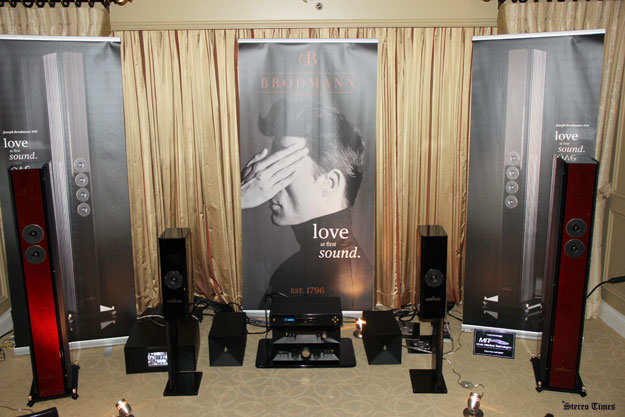
Thrax Audio/Brodmann Acoustics
The elegantly finished Brodmann FS ($4000) monitor loudspeakers were driven exquisitely by Thrax Audio of Bulgaria. The Thrax Audio Heros mono amps ($38,500) utilize a two-gain stage design using a single tube at the input stage. The Dionysos preamplifier ($21,500) uses a single gain stage with zero feedback and also utilizes a single triode tube at its input (review in works). The MaximinusDAC ($38,500) boasts a universal DSP controlled 32-Bit/38 kHz discrete resistor ladder DAC.The sound was very natural sounding and it was smooth, rich and lively.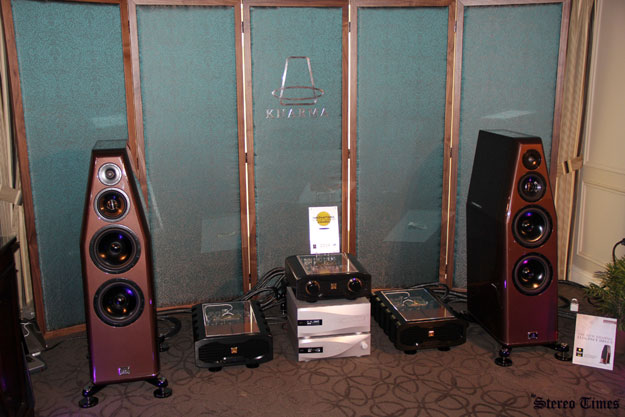
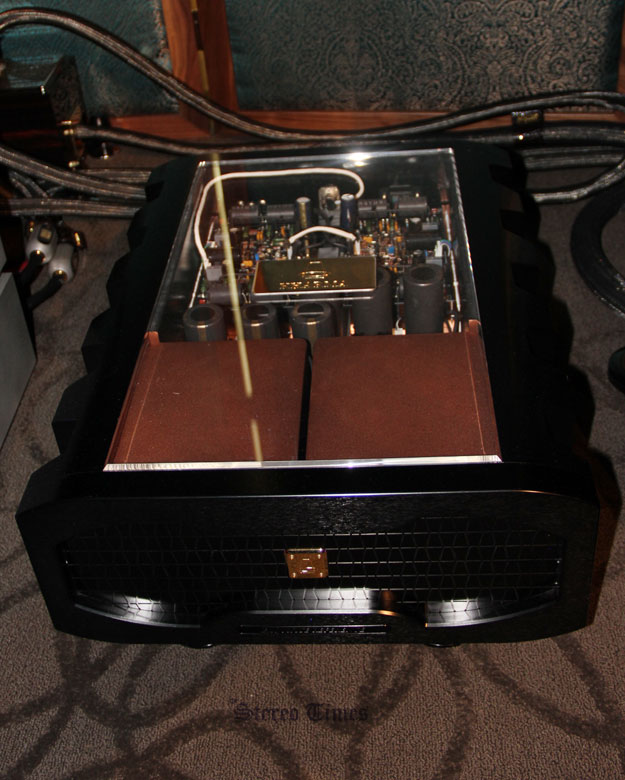
Kharma
Charles van Oosterum of Kharma setup a stellar sounding room a this year’s CES. The sound was very detailed, transparent and had very deep and powerful bass which is quite a feat for these legendary and most times hazardous hotel suite sounds. He debuted the Kharma DB11-S ($54,000), which is a top model in his Elegance Line. It is a three-way floorstander with an exquisitely finished cabinet utilizing a new material which Kharma calls “Kharma Bullet-Proof Laminate.” This new generation of the Elegance Line switches to a new cone technology especially developed by Kharma. The Kharma Composite Driver (KCD) – carbon-fiber midrange driver and a pure beryllium tweeter – has achieved a much richer tone color at no apparent cost in resolution and speed. The dB11-S is driven by Kharma’s own state of the art solid state Exquisite electronics, MP1000 mono amps ($48,000), and a P1000 preamplifier ($48,000), sourced by dCS’s Vivaldi and harnessed with Kharma’s cables. ![]()
![]()
Avatar Acoustics
Darren Censullo of Avatar Acoustics debuted the Rosso Fiorentino Fiorentia loudspeakers ($99,995/pair – a floorstanding four-way whose enclosures feature aluminum front panels and glass sides). The midrange and treble units are mounted in an open baffle and the top-mounted woofer and the twin 12” active subs are mounted in a sealed enclosure. The subs are powered by a 1500 watt amplifier. The new Graaf GM 400 stereo amplifier ($24,995) was introduced to celebrate the 30th anniversary of Giovanni Mariani’s company. Atypical of GraaF, this is a solid-state amplifier which outputs 210 watts per side into 8 ohms, 360 watts into 4 ohms, whereas the original Graaf amplifiers were all OTL tubed designs. The rest of the system consisted of the AMR CD-77 ($10,995) used as a transport only for AMR DP-777 DAC/Preamp SE ($4,995) and MainFrame music server ($4,995). All cabling came by way of Current Cable Guardian and the Conqueror Series. The GM 400 amp powered the Fiorentia loudspeakers impressively: The overall sound was powerful and dynamic with a very convincing soundstage.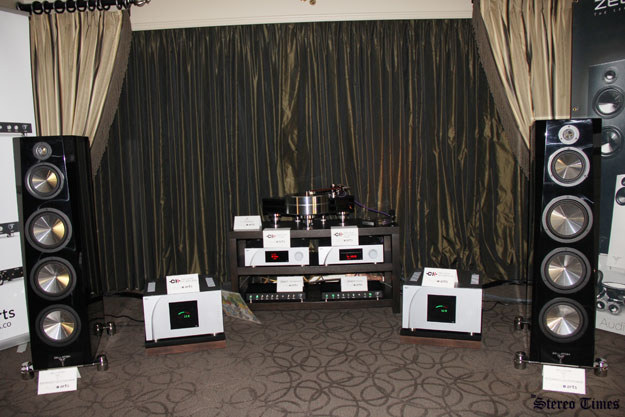
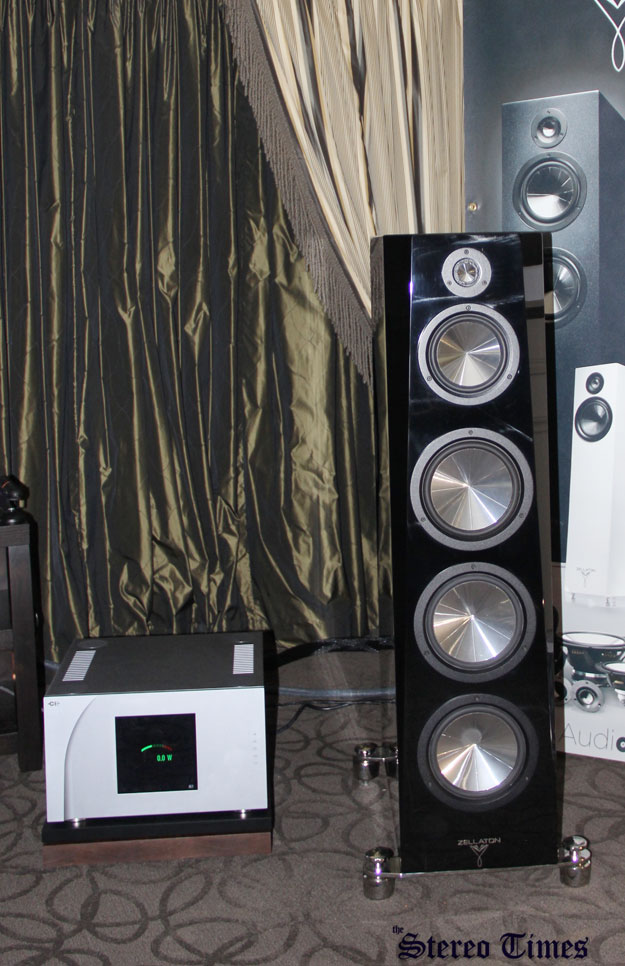
Zellaton/CH Precision
Gideon Schwarz of Audio Arts NYC set up an outstanding sounding room. The German Zellaton Reference ($97,750) loudspeakers were powered by CH Precision M1 ($TBA) amplifier. In bridge-mode the M1 boasts a prodigious 700 watts per side. The rest of the system is composed of the Trinity preamplifier ($34,750), Trinity phonostage ($34,750), and a Sperling turntable ($39,950) fitted with a Durant talea arm ($9,500). A Jan Allaerts MC2 Boron Mk.2 cartridge (TBA) and digital sources were working in tandem with a digital duo composed of the C1 DAC ($33,000) and a D1 SACD/CD Player ($33,000). The system was detailed with what felt like super resolution and outstanding in transient speed.


Absolare
Surprisingly, the Magico S5 loudspeakers ($29,500) were driven by an Absolare Passion Signature 845 Single-Ended parallel 52W mono amplifier ($48,500/pair) and a Passion Signature preamplifier ($32,500),instead of usual big solid state amplifiers. The Beat Magdrive Kodo signature turntable ($34,500) and Schroder arm ($9,900), a Lyra Atlas cartridge ($9,500), and an Allnic H-3000 phonostage ($11,900) made up the analog rig. Echole Omnia cabling was used throughout the system. The Absolare mono amps drove the S5 with great ease and produced a rich, seductive and very transparent sound.
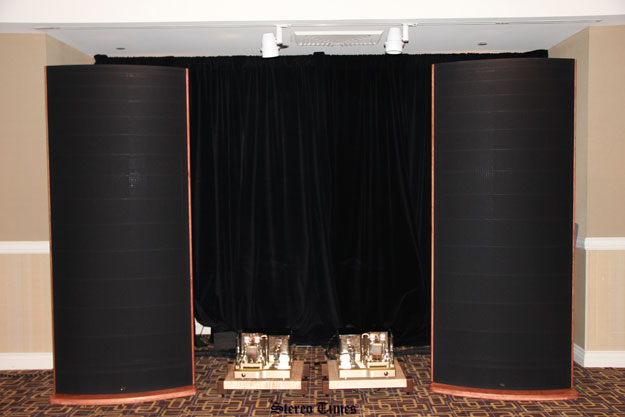
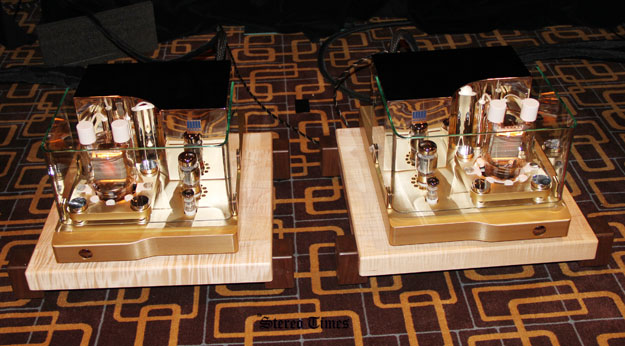
Wavac Audio
Jonathan Brown of Covenant Audio Consulting chose to stage the world debut of Wavac’snew amplifier, the Wavac HE-833v2 monoblock amplifier ($79,900/pair). These are directly-heated triode Single-Ended mono amplifiers producing an amazing 150 watts per side. The Wavac HE-833v2 was paired with their PR-T1 preamplifier which is transformer-coupled with a three chassis preamplifier ($30,900) with an AC02 power conditioner ($22,900) powered the Soundlab Majestic 845PX ($32,583/pair) impressively. When I heard the system on the first day, I must admit, I wasn’t impressed. For some reason the system sounded as though the HE-833v2 was running out of dynamic headroom. Even though the system was set up was in a huge room with 150 watts per side it should have had enough power to drive the Soundlab. I knew something wasn’t set up right and I just had to come back and give another listen. Sure enough, I came back two days later and the system sounded beautiful. The HE-833v2 drove the Majestics with ease and great authority and produced a seductive sound.
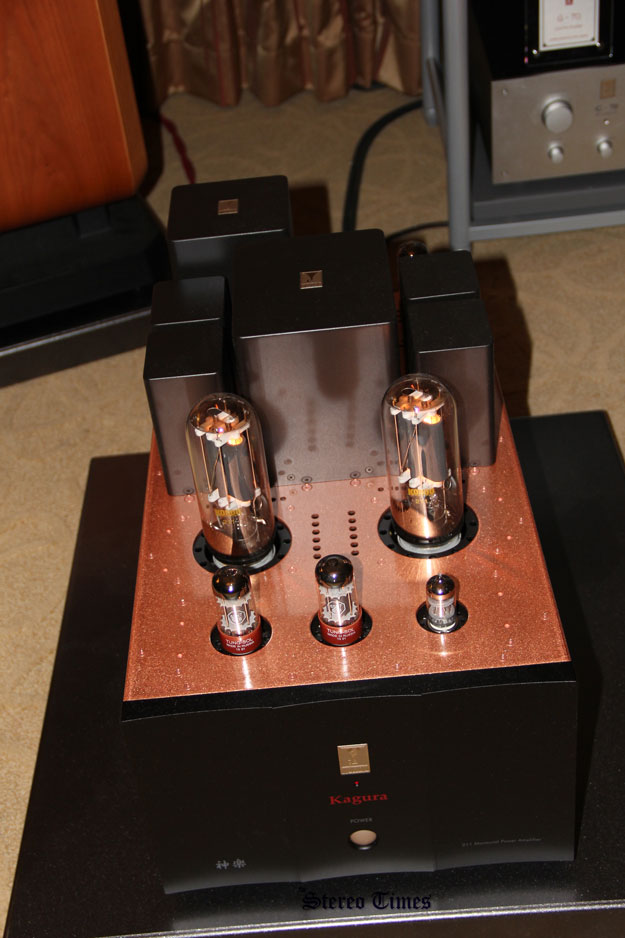
Kondo-Audio Note
Kondo-Audio Note of Japan debuted their new flagship Kagura monoblock amplifiers ($198,000). The Kagura produces a glorious pure 55 watts per-side using 211 triode output tubes in a parallel Single-Ended design. The Kagura is very powerful and drives B&W 801D loudspeakers in its system. These are speakers that are known as a tough load. The Kagura powered the 801Ds effortlessly. Listening to the Pablo De Sarasate Carmen-Fantasie on a Ginga turntable was an enlightening experience. The name “Kagura” means Music for a Shrine or Music for the Gods in Japanese and it was truly music to my ears. The sound was captivating; it was pure, delicate with gorgeous timbres that were intoxicating and powerful. The Kagura didn’t seem to sweat at all and it had plenty of headroom left. Kagura uses three independent main transformers and four choke coils and, of course, the legendary silver output transformers. And, according to the Kondo “Newly designed filament circuits guarantee pure sound quality.” It also utilizes a large new-generation custom made pure-silver foil capacitor. The analog set up consisted of the Ginga ($100k) turntable system, a IO-M moving coil phono cartridge ($9,400) with a GE-1 ($13,500) phono amplifier, aKSL-SFz/LPz (Silver wound transformer with KSL-LPz output cable $12,900). All signals were fed through an M1000 MKII ($90k) linestage preamplifier. KSL silver cables completed the system. 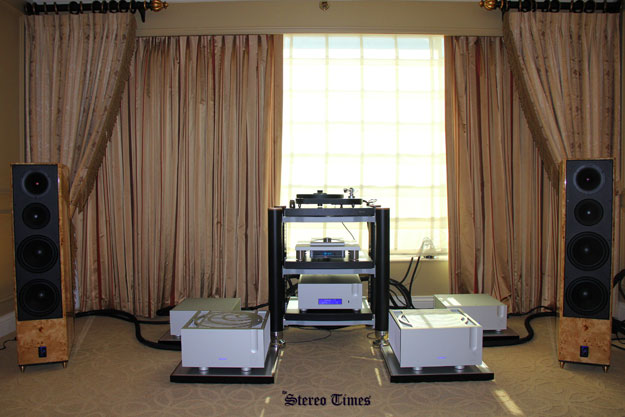
Ypsilon/Lansche
The Lansche N0.5.1 loudspeakers with plasma ion tweeter ($50k/pair) sounded very natural, delicate and transparent driven by gorgeous-sounding Ypsilon of Greece. The Ypsilon Aeliusis a push pull mono amps ($36k/pair), a Ypsilon PST-100 MKII tube preamplifier ($37k), a digital source by Ypsilon CDT-100 CD Transport/Player ($26k) and Ypsilon DAC-100 tube DAC ($29k) and Ypsilon VPS-100 tube phono stage ($26k) with Ypsilon MC10L Step-up Transformer ($6,200). Thales TTT Compact turntable ($13,200) with Thales simplicity tone-arm ($9,200) made up the analog set up and all cabling was by Stage III Concepts.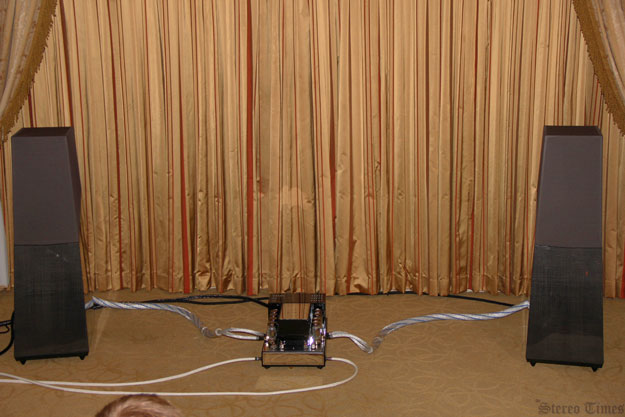
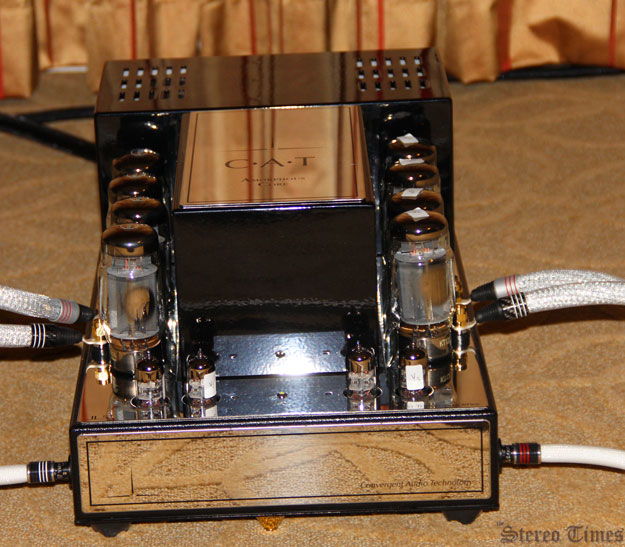
Convergent Audio Technology
CAT’s Ken Stevens was showing off his new baby, the JL5 Triode stereo amplifier ($12k) with Vandersteen 5A Carbon loudspeakers. All in all, this combo produced a wonderful sound. The JL5 created a sound that was very dynamic and revealing, with fine detail as one would come to expect from CAT. This powerful amplifier (100 watts per side into 8 Ohms) features a newly developed “OptiBias” which keeps the tubes perfectly biased. The JL5 was designed to bring CAT’s quality to a smaller, more conventional chassis and make tube biasing simpler and more affordable. LEDs indicate when the KT120 tubes need changing.
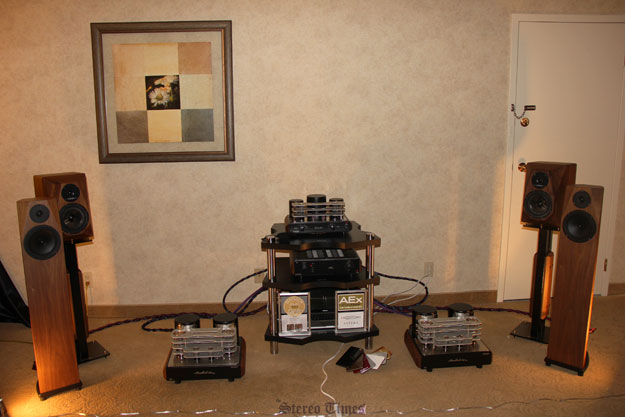
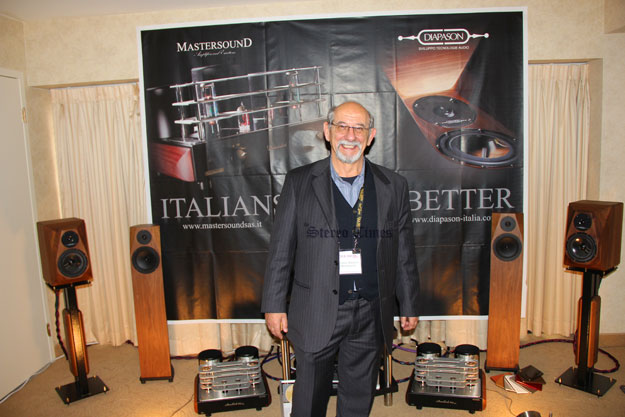
Mastersound/Diapason Audio
Lorenzo Sanavio of Mastersound of Italy introduced me to his new Mastersound Final 845 monoblock amplifier ($14,500/pair) in a room where it was paired with Diapason loudspeakers from Italy. The Final 845s operates in a Parallel Single-Ended Class-A mode with zero negative feedback and produces a powerful (for a SET amp) 50 watts per side. The Mastersound Final 845 Monoblock amplifiers and Mastersound PH L5 V2 preamplifier ($6,200) powered the Diapason loudspeakers from Italy beautifully with a sound that was natural, warm and more importantly, musical. I really enjoyed listening to the Final 845s along with Lorenzo.

Viola Audio Labs/ Ocean Way Audio
The Ocean Way Audio Montecito loudspeakers ($48,000/pair) gave off a fabulous sound in the Viola Audio Labs set up. I had been impressed by Viola Audio Labs when I heard them before (both at shows and at a dealer’s). The Viola Audio Labs Concerto stereo amplifier ($22,500) and Viola Audio Labs Crescendo preamplifier w/integrated DAC ($22,500) powered the Montecito loudspeakers outstandingly,with big dynamic swings and lots of detail. Both the Crescendo preamplifier and the Concerto amplifier chassis are milled from a solid billet of aircraft grade aluminum. This resulted in a very rigid chassis with very low resonance. The fit and finish is top notch. The Crescendo preamplifier features a high resolution USB DAC input capable of data streams up to 192 kHz/24Bits. Cleverly, the Crescendo uses Wi-Fi remote control on Apple devices. The Concerto amplifier is a Class AB biased push-pull amplifier designed and like all Viola Audio Labs power amplifiers using a choke input power supply to minimize intermodulation distortions.
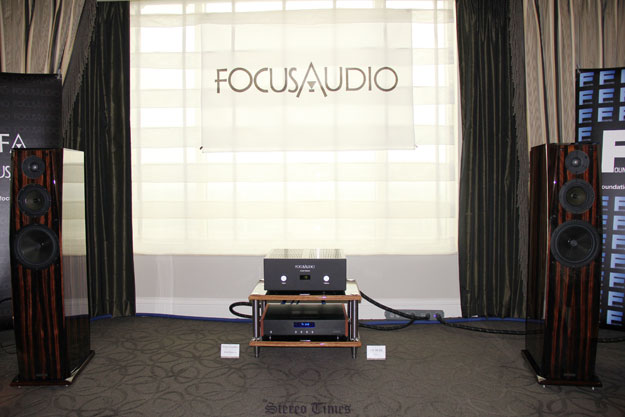
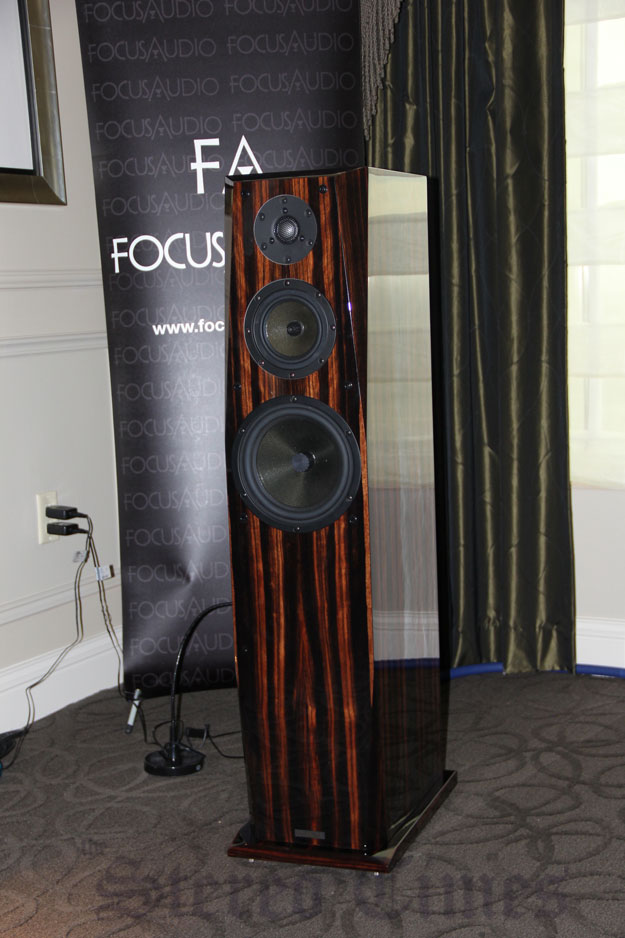
Focus Audio
The Focus Audio Liszt Sonata integrated tube amplifier ($12k) set up with their FP90 BE loudspeakers ($13k/pair) sounded as good as I remembered; it produced a detailed, coherent and a natural sound that was relaxing and easy to enjoy. The Liszt Sonata integrated amplifier produces 35 watts per-side with EL34 tubes and uses a Class AB push pull topology with very deep Class A biasing and special auto bias circuitry eliminating the need for bias adjustment. Custom designed double C core output transformers are used.
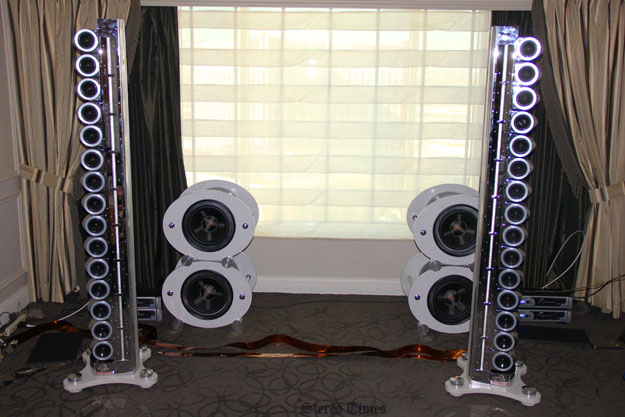
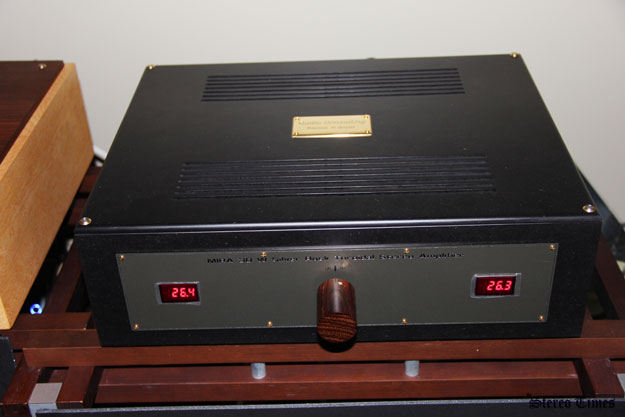
Audio Consulting/Scaena
The ScaenaIso-Linear Array speakers ($75k) sounded outstanding using all-battery powered electronics from Audio Consulting of Switzerland.The system consisted of an Audio Consulting Silver Rock MIPA(Mains Independent Power Transformer) amplifier ($52k) 120 watts per side outboard battery power supply contains two 12V batteries in series per channel and an Audio consulting SWGLA (Silver Wire Gain Line amplifier) preamplifier ($22,500). It features a stylish maple and palisander veneered natural wood chassis. I have fond memories of Audio Consulting from when I visited them Switzerland back in 2012 with Clement Perry. There we got the rare opportunity to spend some serious listening time with Serge Schmidlin and his fabulous listening room.

Acapella Audio Arts/Einstein
I couldn’t help it. I had to get into the Acapella suite to hear the newest Acapella Atlas loudspeakers. Hermann Winters of Acapella Audio Arts of Germany greeted me with a warm smile and the sound that emanated from his Atlas loudspeakers were awesome sounding driven by all Einstein electronics. The Acapella Atlas loudspeakers sell for a cool ($99k/pair). They are eye-catching and artistic looking. You’ll either love or hate them. Acapella cabling tied everything together effortlessly.
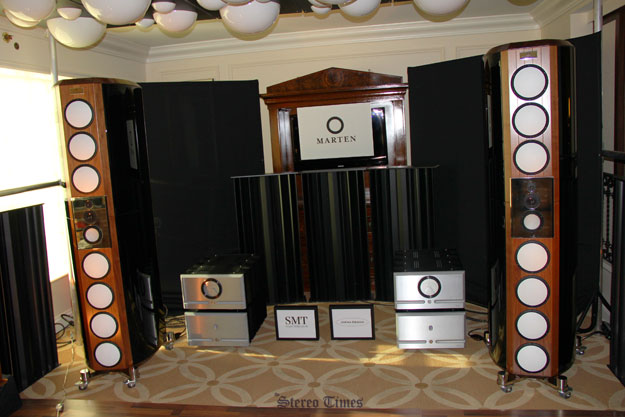

Marten Design/Pass Labs/Jorma Design
Wow!The Coltrane Supreme 2 from the Swedish company Marten was one of the most extreme loudspeakers at the 2014 CES. Imposing and beautiful, they are6’ 8” high and weigh 507 lbs. Priced at $480,000/pair they are not what I would call an average audiophile’s loudspeaker; but if one hasthe means and the room to put them in, why not? Literally, more power to you. The crossover design is an entirely new approach. A joint venture with Accuton, it incorporates a unique CELL technology which creates a sound that is 100% time and phase coherent. The Coltrane Supreme 2 is a massive floorstanding loudspeaker utilizing CELL drivers:One 20 mm diamond supertweeter; one 51 mm diamond tweeter; one 5” ceramic-cone midrange; one 8” laminated aluminum-sandwich mid-bass woofer; six 8” laminated aluminum-sandwich low-bass woofers;and six 11” sandwich passive radiators. They are crossed-over with first-order filters driven by two pairs of Pass Labs Xs-300 dual chassis monoblocks. The Coltrane Supreme 2 rendered music beautifully; it was transparent, detailed and, as expected, the size and scale were very lifelike. All cables were by Jorma Design Statement series.

Krell
Krell debuted their new patent pending KrelliBias high-efficiency Class-A technology amplifiers, replacing all of its previous power amps with seven new models. In essence, the amplifiers run in a full Class-A mode to full power while consuming far less energy (heat) than traditional Class-A amplifiers and adjusting power going to them according to their needs. The iBias is a circuit that continuously measures current flow through the amplifier’s output and instantly adjusts bias going to the transistors.The new Krell Duo 300 stereo amplifier ($9,500) paired beautifully with YG Acoustics Sonja 1.2 loudspeakers.
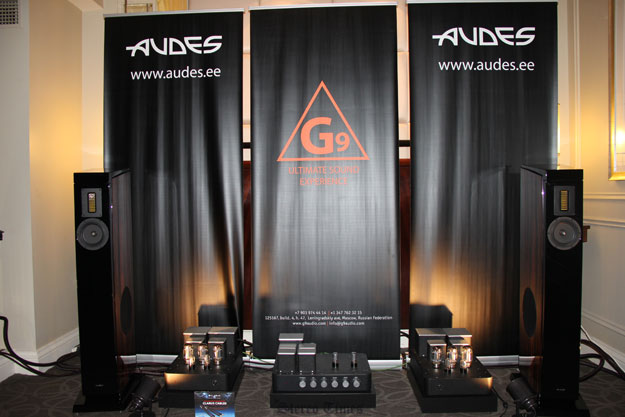
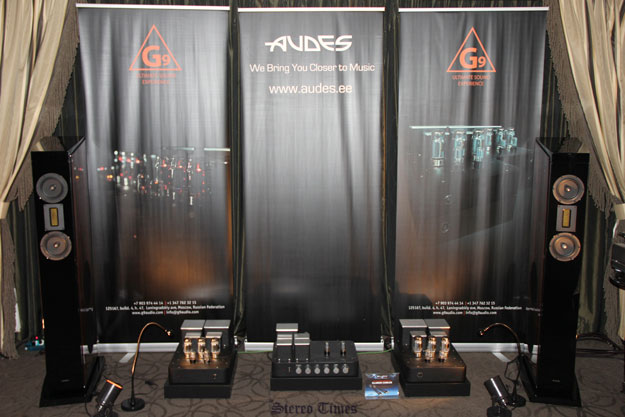
G9 Audio/Audes
Audes showcased their sleek looking Excellence AMT loudspeakers ($10k) which partnered very well with all-tube electronics from Russia. A newcomer to watch, the G9 Audio from Moscow, G9 Audio Nero 88 monoblocks and a Nero preamplifier ($40k/set) monoblocks are all hand-built.


Stereo Times Masthead
Publisher/Founder
Clement Perry
Editor
Dave Thomas
Senior Editors
Frank Alles, Mike Girardi, Russell Lichter, Terry London, Moreno Mitchell, Paul Szabady, Bill Wells, Mike Wright, and Stephen Yan,
Current Contributors
David Abramson, Tim Barrall, Dave Allison, Ron Cook, Lewis Dardick, John Hoffman, Dan Secula, Don Shaulis, Greg Simmons, Eric Teh, Greg Voth, Richard Willie, Ed Van Winkle, Rob Dockery, Richard Doran, and Daveed Turek
Site Management Clement Perry
Ad Designer: Martin Perry



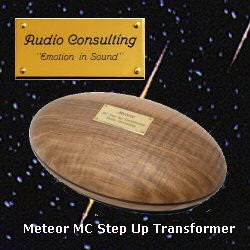



Be the first to comment on: CES 2014: Staff Report part 2